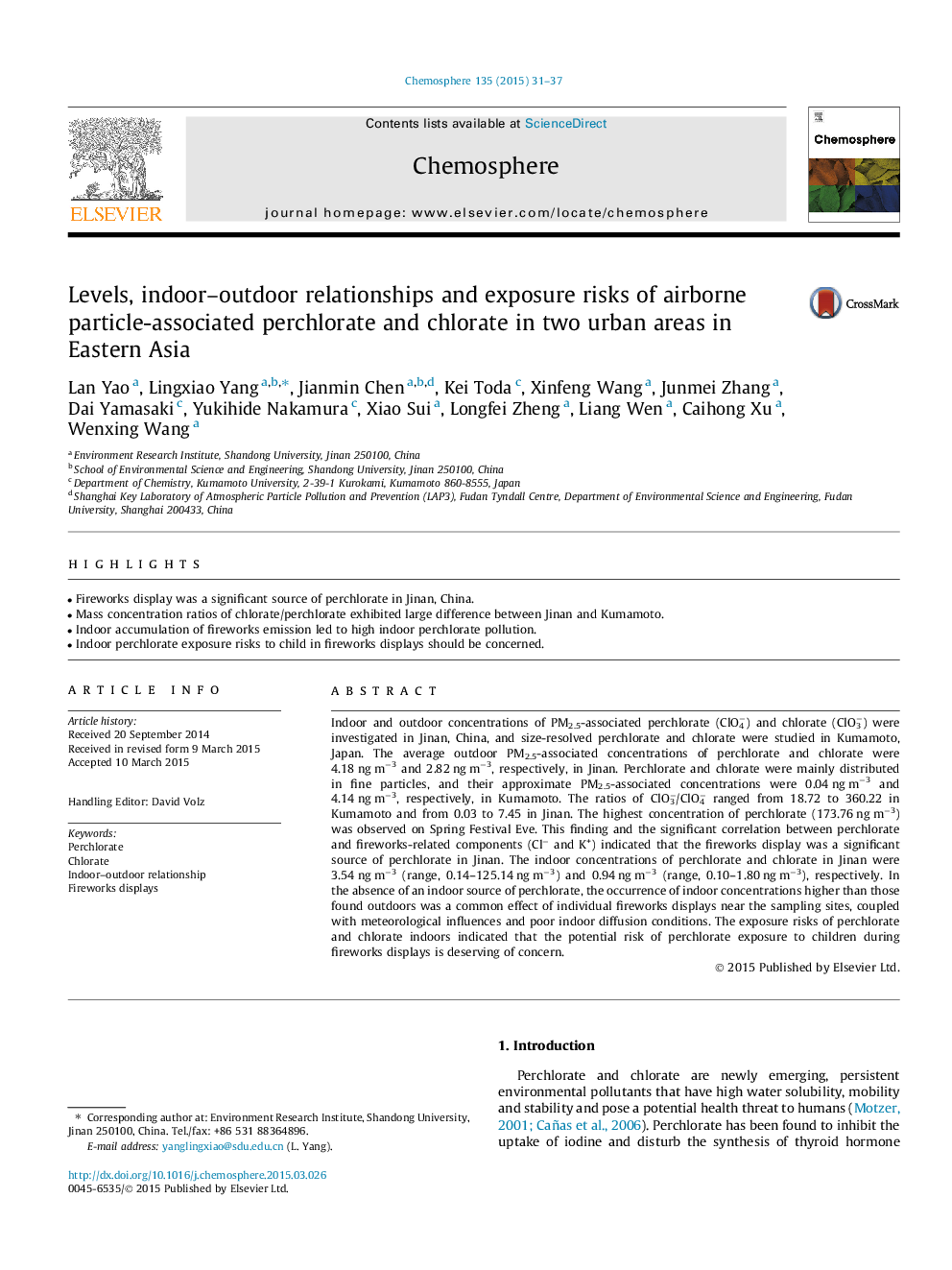| Article ID | Journal | Published Year | Pages | File Type |
|---|---|---|---|---|
| 6307793 | Chemosphere | 2015 | 7 Pages |
Abstract
Indoor and outdoor concentrations of PM2.5-associated perchlorate (ClO4â) and chlorate (ClO3â) were investigated in Jinan, China, and size-resolved perchlorate and chlorate were studied in Kumamoto, Japan. The average outdoor PM2.5-associated concentrations of perchlorate and chlorate were 4.18 ng mâ3 and 2.82 ng mâ3, respectively, in Jinan. Perchlorate and chlorate were mainly distributed in fine particles, and their approximate PM2.5-associated concentrations were 0.04 ng mâ3 and 4.14 ng mâ3, respectively, in Kumamoto. The ratios of ClO3â/ClO4â ranged from 18.72 to 360.22 in Kumamoto and from 0.03 to 7.45 in Jinan. The highest concentration of perchlorate (173.76 ng mâ3) was observed on Spring Festival Eve. This finding and the significant correlation between perchlorate and fireworks-related components (Clâ and K+) indicated that the fireworks display was a significant source of perchlorate in Jinan. The indoor concentrations of perchlorate and chlorate in Jinan were 3.54 ng mâ3 (range, 0.14-125.14 ng mâ3) and 0.94 ng mâ3 (range, 0.10-1.80 ng mâ3), respectively. In the absence of an indoor source of perchlorate, the occurrence of indoor concentrations higher than those found outdoors was a common effect of individual fireworks displays near the sampling sites, coupled with meteorological influences and poor indoor diffusion conditions. The exposure risks of perchlorate and chlorate indoors indicated that the potential risk of perchlorate exposure to children during fireworks displays is deserving of concern.
Keywords
Related Topics
Life Sciences
Environmental Science
Environmental Chemistry
Authors
Lan Yao, Lingxiao Yang, Jianmin Chen, Kei Toda, Xinfeng Wang, Junmei Zhang, Dai Yamasaki, Yukihide Nakamura, Xiao Sui, Longfei Zheng, Liang Wen, Caihong Xu, Wenxing Wang,
